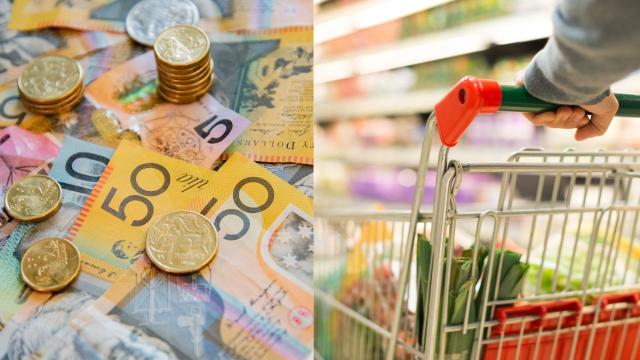At this point, we all know inflation is high and that it’s driven up the cost of basically everything. It feels like everything is more expensive in general right now, but data shows that certain parts of our economy have been impacted more by the inflation rate than others.
The team at The Guardian put together an interactive graph that shows how much inflation has changed prices in Australia. The chart reveals some interesting insights into the state of the economy right now and it might also help you plan where to put your money during this cost of living crisis.
The data uses the most recent figures from the ABS, currently the March 2023 quarter, and tracks the cost of items and services on the price index and how they’ve changed over the last decade. It uses a weighted average across all Australian capital cities.
Check out the interactive data for yourself here or you can look at the ABS stats here.
Here are some of the key takeaways we found.
Things that have increased due to inflation in Australia
To set the scene, Annual CPI inflation in Australia hit a 30-year high in December 2022 at 7.8%. That decreased slightly in the March quarter to land at 7%.
Some of the things that have been influenced the most are:
- Gas and other household fuels: Gas and electricity prices have been hit the hardest by inflation, with a 40-point increase in the CPI, going from 154.6 in March 2022 up to 195.1 in March 2023.
- Medical and hospital services: Health services are still on the rise due to inflation. Twelve months ago, medical services were at 169.7 and have been on a steady increase ever since, coming to 181 in March 2023.
- Meat: The price of meat, in particular beef and veal, is another sector that has seen an increase over the last year, going from 160.9 to 174.4 in 12 months. On the flip side, vegetables have actually dropped 12.5 points in the past six months, if that gives you any incentive to swap to a vegetarian diet.
Groceries have seen an increase across the board, with data showing that dairy and bread and cereal products have seen the largest percentage change annually in the food category. - Travel: Somewhat unsurprisingly, both domestic and international travel prices have inflated since the pandemic. Domestic holiday travel and accommodation are currently at a record high at 165.6, increasing from 132.5 a year ago. International travel, meanwhile, has dipped a little bit since December, settling at 145.5, but it is still 40 points higher than a year ago.
- Housing: Obviously, skyrocketing house and rental prices have been prevalent in the news cycle, but exactly how bad is it? The ABS data shows that housing has increased by 9.8% in the past 12 months, which is… not great. Rental prices across the country have seen their largest annual rise since 2010, which is a reflection of demand and low vacancy rates.
While this data is averaged across all the capital cities in Australia, the stats do show that inflation is rising at different rates across the country.
The latest reports show that Brisbane saw the largest quarterly movement with a 1.9% increase, while Perth was the lowest at 0.9%.
Annually, however, Adelaide saw the largest increase from March 2022-23, with a 7.9% increase, followed by Brisbane (7.4%) and Sydney (7.3%).
Is anything getting cheaper?
The outlook at the cost of living right now is, we’re going to be honest, pretty grim, but there are a few categories that have fallen ever so slightly.
In the long run, categories including AV and computing equipment and Telco services have remained stable since 2020.
Fuel prices have also increased massively over the past year, but it has seen a decrease in recent quarters, particularly diesel. Unleaded petrol was sitting at a daily rate of 216c per litre in March 2022, while it is now averaging around 187c. Diesel was at 225.6c in March 2022 while it has since fallen to 194c, a year later.
We have to take the silver linings where they come, I guess.
If you’re looking for ways to help survive this cost of living crisis, we’ve put together some recipes that cost less than $10, as well as our best tips to help you try and get the most out of that tax return come EOFY.

Leave a Reply
You must be logged in to post a comment.